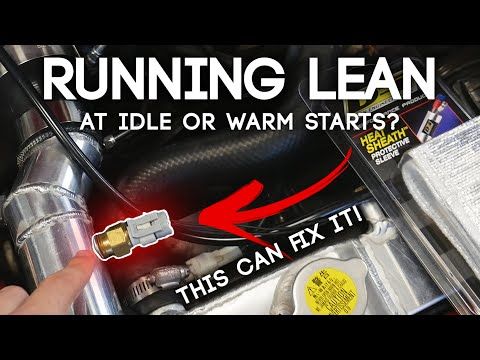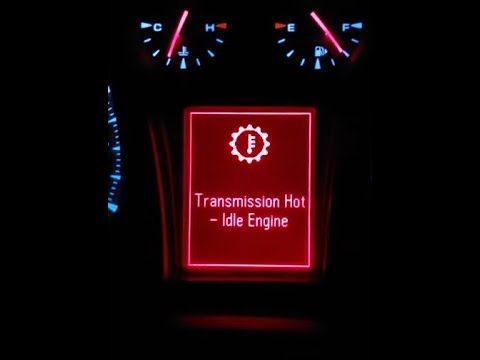


A "Transmission Hot Idle Engine" warning is an indication that the transmission fluid temperature has exceeded the normal operating range while the vehicle is idling. This can be caused by various factors, and if left unaddressed, it can lead to severe transmission damage. Addressing this issue promptly is crucial to prevent costly repairs and ensure the longevity of your vehicle's transmission.

Before we dive into the solutions, it's essential to understand the root causes of a transmission hot idle engine. Over the years, I've identified several common culprits:
| Common Causes | Description |
|---|---|
| Low or Overfilled Transmission Fluid Level | Insufficient fluid leads to inadequate lubrication and cooling, causing the transmission to overheat. Overfilling can also create friction and overheating. |
| Dirty or Contaminated Transmission Fluid | Over time, the fluid can break down and become contaminated, reducing its cooling and lubricating abilities. |
| Faulty Transmission Cooler or Radiator | If the transmission cooler lines are clogged or the radiator is not functioning properly, it can restrict fluid flow and cause overheating. |
| Aggressive Driving or Towing Heavy Loads | Putting excessive strain on the transmission by aggressive driving, towing heavy loads, or driving up steep inclines can generate excessive heat. |
| Failed Transmission Temperature Sensor | A faulty sensor can provide incorrect temperature readings, causing the warning message to appear erroneously or preventing the vehicle from detecting an actual overheat condition. |
| Internal Transmission Failure | In some cases, the warning could indicate internal transmission component failure, such as a faulty solenoid, torque converter, or other internal parts. |
When a customer brings in a vehicle with a transmission hot idle engine warning, I follow a systematic diagnostic approach to pinpoint the root cause:
Check the transmission fluid level and condition
Inspect the transmission cooler lines and radiator
Scan for diagnostic trouble codes
Inspect wiring and connectors
Consider internal transmission issues
Once the root cause has been identified, it's time to address the issue with the appropriate repair procedures:
| Repair Procedure | Description |
|---|---|
| Low/Overfilled Fluid Level | Drain and refill with the correct type and amount of transmission fluid as per the manufacturer's specifications. |
| Dirty/Contaminated Fluid | Perform a transmission fluid flush and filter change. |
| Faulty Cooler Lines or Radiator | Replace any clogged or leaking cooler lines. Repair or replace the radiator if necessary. |
| Faulty Temperature Sensor | Replace the transmission temperature sensor and inspect/repair any damaged wiring. |
| Internal Transmission Issues | Depending on the diagnosed problem, repairs may involve replacing faulty solenoids, rebuilding or replacing the torque converter, or potentially a complete transmission rebuild or replacement. |
While repairs can be costly, preventive maintenance is key to avoiding transmission hot idle engine issues in the first place. Here are some tips I always share with my customers:
Follow the manufacturer's recommended transmission fluid change intervals
Avoid aggressive driving, excessive towing, or overloading the vehicle beyond its rated capacity
Ensure proper cooling system maintenance, including regular coolant changes and flushing
Address any warning lights or abnormal behavior promptly to prevent further damage
The cost of repairs can vary significantly depending on the underlying issue. Simple fluid changes and sensor replacements may cost a few hundred dollars, while more extensive repairs like transmission rebuilds or replacements can easily exceed $1,000 to $3,000 or more, especially for larger vehicles.

It's essential to weigh the cost of repairs against the value of your vehicle and consider whether a transmission rebuild or replacement is a worthwhile investment. In some cases, it may be more economical to explore purchasing a new or used vehicle.
Dealing with a transmission hot idle engine warning can be a frustrating experience, but with the right knowledge and approach, it's often fixable. As a mechanic, I've seen countless cases where proper diagnosis, repairs, and preventive maintenance have resolved this issue and restored vehicles to optimal performance.
Remember, addressing transmission problems promptly is crucial to prevent further damage and costly repairs down the line. If you're experiencing a transmission hot idle engine warning, don't hesitate to bring your vehicle to a trusted mechanic for a thorough inspection and professional advice.
This warning typically indicates that the transmission fluid temperature is too high. It can be caused by low fluid levels, dirty fluid, faulty coolers, aggressive driving, or internal transmission issues.
Consult your owner's manual for the proper procedure to check the transmission fluid level when the transmission is at operating temperature.
Always use the type of transmission fluid specified by the manufacturer for your vehicle's make, model, and year.
Follow the manufacturer's recommended service intervals for transmission fluid changes, typically every 30,000 to 100,000 miles.
It's not recommended to continue driving with this warning, as it can lead to further transmission damage. Pull over and allow the transmission to cool down.
Signs of a faulty transmission cooler include leaks, restricted fluid flow, and the transmission overheating more frequently.
Internal transmission component failures, such as faulty solenoids or a damaged torque converter, may require a rebuild or replacement.
Yes, aggressive driving habits like rapid acceleration, excessive towing, or driving up steep inclines can put extra strain on the transmission and cause overheating.
Follow the recommended maintenance schedule, avoid aggressive driving, and address any warning lights or abnormal behavior promptly.
The cost can vary significantly, from a few hundred dollars for fluid changes and sensor replacements to $1,000 to $3,000 or more for rebuilds or replacements.

Sarah isn't your average gearhead. With a double major in Mechanical Engineering and Automotive Technology, she dived straight into the world of car repair. After 15 years of turning wrenches at dealerships and independent shops, Sarah joined MICDOT to share her expertise and passion for making cars run like new. Her in-depth knowledge and knack for explaining complex issues in simple terms make her a valuable asset to our team.













